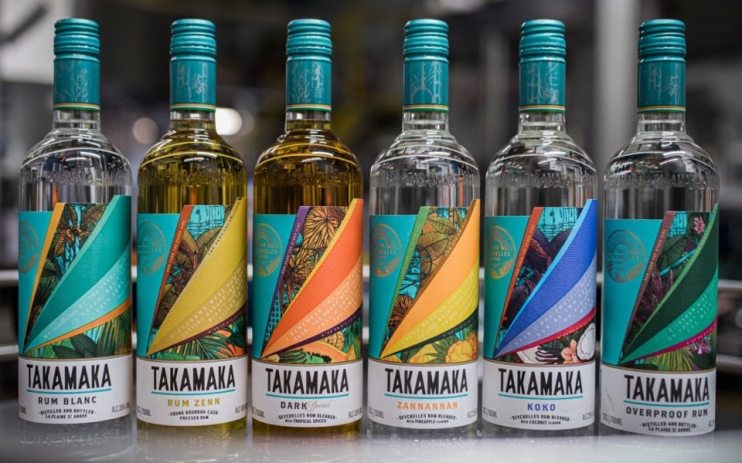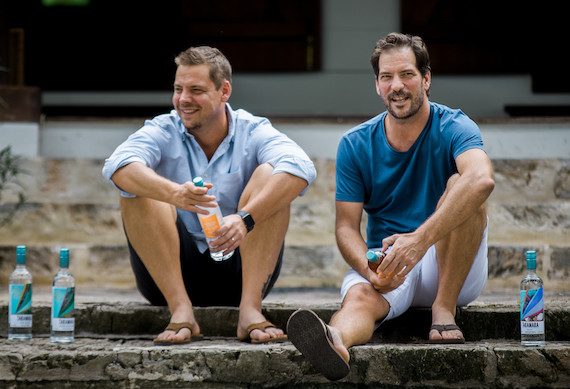How Takamaka rum went from garage grog to a top tipple

Would you drink rum that started life in a swimming pool? The former manager of a Soho dive bar and a drag club in Camden thinks you’d be mad not to. Richard Cohen is the only non-national working for the Seychelles rum brand Takamaka, which has just arrived in the UK in the form of Rum Blanc, Dark Spiced, Zannannan (Pineapple), Koko (Coconut), and Overproof. Distilled from molasses and diluted with natural spring water from the Seychelles National Park, the Seychelles Series is a “true expression of the tropical island paradise that is the Seychelles”.
“I have been able to get involved in everything – from the cask program, to our new blends coming out later in the year to the general marketing,” says Cohen. “It’s fantastic to be living here working with what is still a smallish family-owned distillery.”
Takamaka now has the first molasses distillery in the Seychelles. It was founded by brothers Bernard and Richard d’Offay. “It’s been a 20 year rum-making journey,” says export director Bernard, “Our cask ageing programme is finally coming to fruition. We’ve got about 40,000 litres, so we want to show it off around the world now. Our geographical isolation is our greatest strength and also our greatest weakness. Logistics, both incoming and outgoing, is a huge challenge.”
In 2000 Bernard and his father, Robert, ordered a book on home distillation and joined an online forum on how to build a still and produce “good” rum. With limited access to conventional distillation parts, they used their own pool as an interim cooling tower for their makeshift condenser. In 2002 they opened Trois Frères Distillery in Providence on Mahé, Seychelles, with a still assembled by a local welder.
With no sugar industry in the Seychelles, what little sugar cane was then grown on the island was mostly used to produce Baka, the local fermented beer. Bernard and Richard fermented sugar crystals as the base for their rum, delivering their rum in an old Citi Golf.
The family obtained a 50 year lease on the derelict, burnt down 1792-8 La Plaine St André, an estate which had been the family home of the Jorre de St Jorre family, long-time neighbours of the d’Offays. They spent two years restoring the building which once housed a patchouli and cinnamon distillery with copra kilns.

The brand is named after the coastal Takamaka tree which is also used for ship building, housing and furniture. Takamaka is also the name of a beach and a district 24kms from the capital Victoria.
“One of the reasons why sugar cane wasn’t widely grown on the island were long-standing laws to ensure farming produced food for the local community,” explains Richard. “We’ve helped farmers maximize their income by planting sugar cane in the forgotten corners of their lands.”
Paid cash on delivery, cane was dropped off at the distillery, often in small amounts from the back of a hatch-back car. The team began working more closely with the local farmers, supporting their organic farming techniques, returning all the bagasse – pulpy sugar cane residue – for the farmers to reuse throughout their farms, and providing them with large tanks for rainwater collection.
In the early days, Richard and Bernard would be lucky to produce 1,500 litres of finished cane rum a year and continued to import raw, high-proof rum, mainly from Mauritius. Some was bottled and sold as white rum but they also experimented with ageing some of it in casks, or blending it with aged rum before ageing it more in the tropical climate of Seychelles.
For those who can’t get to the Seychelles and taste Takamaka first hand in the old plantation house, the paradisiacal liquids are now available in the UK.